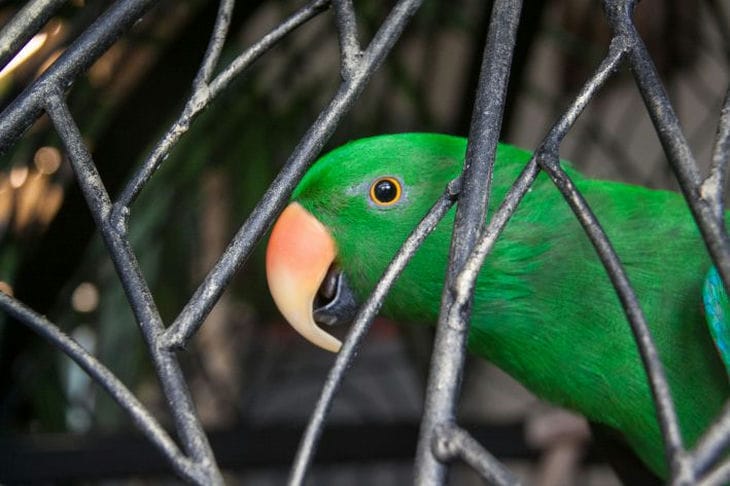The scarlet macaw and the yellow-crested cockatoo stand apart from their relatives: their size and lifespan – about 30 years – are impressive.
Scientists became interested in whether there was a connection between these two differences. As a result, they managed to find out many interesting facts about the different subspecies.
How centenarians were studied
The original goal of ornithological research was to determine the reasons for the long life span given by nature.

Four main hypotheses were put forward:
- relatively large brain volume;
- large time expenditures on growing up and development;
- improved skills of interaction with fellow tribesmen;
- features of nutrition and living conditions.
Parrots are renowned for their outstanding communication skills and exceptionally long lifespans by bird standards. Only large species of birds are capable of reaching their thirtieth birthday. A cause-and-effect relationship has been discovered between these factors.
The problem was to obtain good quality data, which can only be collected through long-term observation. Comparative studies of the biographies of a large number of birds require corresponding sample sizes.
The combination of numerous processes resembles a simultaneous game session, which involves many variations. To ensure the purity of the experiment, it was decided to use only zoo inhabitants: they are always in sight and are kept in the same conditions.
The large-scale survey involved 217 species – more than half of all existing ones, including the smallest representatives – budgerigars or sparrow parrots.
The smartest and most sociable survive
The data came from more than 1,000 breeding centres, containing information on approximately 130,000 individuals.
The analysis revealed a striking range of lifespans that exceeded expectations: from two years for the smallest subspecies to thirty years for the scarlet macaw.
Other long-lived species include the sulphur-crested cockatoo, a native of Australia that lives an average of a quarter of a century. The study is the first to show a link between longevity and brain size, which is proportionally comparable to that of primates. Complex thinking and enhanced communication skills help them navigate the rewards and dangers of their environment together.
By human standards, the birds are indeed quite old: over 80 years old. The calculations were made by comparing the body weight of females or males with human individuals of the same sex.
The team then conducted a large-scale comparative analysis to determine whether these famous cognitive talents predicted longevity. The researchers took into account the large volume of brain tissue relative to body mass.
First, more intelligent individuals are able to function more effectively in their natural environment, which contributes to the survival of each individual and the evolutionary progress of the species as a whole.
Secondly, the larger the organ, the longer it takes to develop; these periods must be justified by the general increase in life expectancy.
For each species, we collected facts about proportional relationships, average body weights, and developmental variables, compared the data, and worked through each hypothesis to see which one most objectively and convincingly explains what is happening.
The results supported the idea that advanced intelligence makes species more flexible and allows them to live longer. Diet and environmental comfort were secondary factors.
